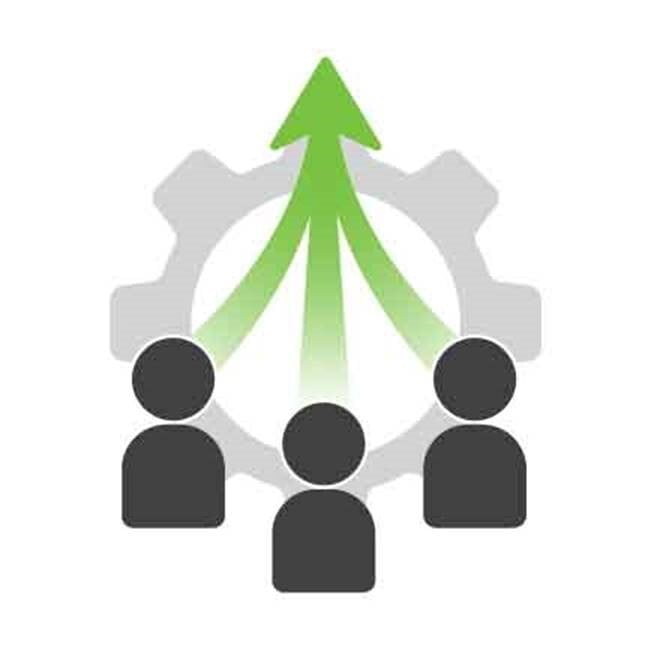What Do You Do?

In just about any stage of life, “what do you do?” is a persistent and relevant question.
Since I sold my IT firm and started my new business nine years ago, I’ve sometimes lacked the clarity to succinctly answer this question. However, this changed for me a couple of months ago. Now I answer confidently “I develop Structured Operations solutions that align leaders, managers and their teams.”
So, what are Structured Operations and why should anyone care about them? Every great visionary has clarity in the way that they see the future. They have an imagination that excites them and those who share their vision, purpose and beliefs. There is a definite psychology for visionaries which allows them to create these inspiring pictures of the future.
The Visionary excels at providing clarity in the realm of “why” and “what.” Vision in an organization is the picture of how the organization will execute its purpose in the future. Purpose can be thought of as the sum impact of the organization’s efforts to act on its guiding beliefs. A guiding belief is the “cause” or an expansion of the current state of a product, service or organization. The visionary believes that the future world will be better, grander and will operate more effectively. Visionaries are idealists who help to propel organizations toward an ultimate, unifying goal.
At Aligned Operations, we believe that every person deserves the opportunity to do fulfilling work in an organization the provides clarity confidence and trust (our guiding belief). We do this by creating Structured Operations solutions and training (our mission) that aligns leaders, managers and their teams (the impact).
The area where the Visionary often gets tripped up is formulating the “how.” The creative mentality of the Visionary isn’t tuned to focusing on the nuts and bolts of getting from now to the future state of their vision. In an organization, the path to the future is the daily execution of effort or work. At Aligned Operations, we define “operations” as the coordination and execution of work. “Structured Operations” is defined as the requisite coordination and execution of work to realize the vision of the organization.
The next several articles will show you how to implement Structured Operations to go from a vision based on a purpose, to the manifestation of that vision. For this article, we’ll start with culture.
Structured Operations and Culture
The term “culture” comes up often in the discussion of operations and management. I think most small business owners don’t really understand what it means to their organizations. I didn’t really put too much thought into it myself until I read this statement from Elliot Jacques:
The most far reaching, dramatic and rapid changes in behavior of individuals in an organization can be achieved by changes in the organization – both in structure and in managerial leadership practices.
I then realized that my control over the environment my employees work in was a priority in building a successful organization. I also realized that what was at stake was not just the success of my organization but the well-being of the people we invited to work in our organization. As business owners, we have a direct impact on the well-being of the people we employ.
I came across an article from Tom Foster that breaks down culture this way:
Company culture is that unwritten set of rules that governs our behavior in the work that we do together. It is unwritten in contrast to our written set of rules, policies, procedures. Culture is often more powerful than any policy we may write or attempt to officially enforce. Often, culture works against our stated policy in operations management.
What is the source of culture, how is it created? These are the four steps in the Culture Cycle:
1. Develop our beliefs, bias, our experiences…our story. Culture is the story we carry into our experience that provides the lens, the frame, the tint, the brightness or darkness of that story.
2. The culture drives team behavior. We can’t see each other’s stories, but we can see their behavior.
3. Behavior, driven by culture, is constantly tested against the reality of consequences. For better or worse, behaviors driven by culture are proven valid, or not.
4. Behaviors that survive, for better or worse, are institutionalized in our rituals and customs. This starts with the way a team member sees the organization.
I sum culture up this way:
“The people in our organizations will behave based on the tested beliefs formed through the rituals and customs that the leaders dictate or allow.”
So, it’s up to the leaders to dictate the rituals and customs or allow them to be created on their own through laissez-faire attention. Most often the rituals and customs which are “allowed” to be created don’t serve the organization’s Vision and Purpose.
Clarity Confidence and Trust
Clarity in an organization means that everyone is free of confusion. There are clear expectations of how work needs to be completed, to what quantity in a time period, and to what quality. Clarity assures those completing the work have reduced stress.
Confidence in an organization means that everyone is free of doubt. Doubt results in poor decision making because no decision is made. Organizational leaders in a requisite organization empower their teams to make confident decisions.
Trust is the magical ingredient in an organization. It is the two-way street where leaders trust the execution of their teams and teams trust their leaders to support them along the way in operations management.
For more information on Elliot Jacques click here.
For more information on Tom Foster click here.
